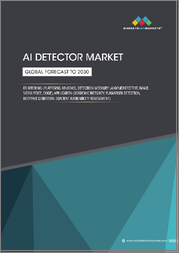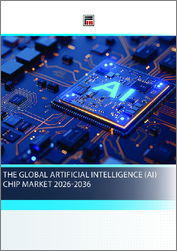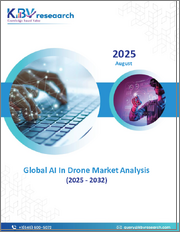
|
시장보고서
상품코드
1813360
세계의 궤도상 물자 추적 시장 예측(-2032년) : 물자 유형별, 전개 모드별, 추적 기술별, 용도별, 최종 사용자별, 지역별 분석Orbital Supply Tracking Market Forecasts to 2032 - Global Analysis By Supply Type, Deployment Mode, Tracking Technology, Application, End User and By Geography |
||||||
Stratistics MRC에 따르면 세계의 궤도상 물자 추적 시장은 2025년에 3억 9,400만 달러로 평가되었고, 2032년에는 12억 2,080만 달러에 이를 것으로 예상되며, 예측 기간 중 CAGR은 17.5%를 나타낼 전망입니다. 궤도 물자 추적은 우주선, 위성, 궤도 정거장을 포함하여 우주로 보내지고 우주에서 수송되는 화물, 자원 및 장비의 체계적인 모니터링 및 관리를 의미합니다. 이는 공급품의 위치, 상태 및 활용도를 실시간으로 추적하여 적시 배송과 최적의 재고 관리를 보장하는 것을 포함합니다. 이 과정은 GPS, RFID, 원격 측정 및 데이터 분석과 같은 고급 기술에 의존하여 궤도 물류에 대한 정확한 인사이트를 제공합니다. 정확한 추적을 가능하게 하고, 낭비를 감축하며, 부족이나 지연을 방지함으로써 궤도 물자 추적은 임무 성공에 중요하며, 우주 탐사, 상업적 우주 운영 및 장기 궤도 임무의 지속 가능성을 뒷받침합니다.
위성 배치 급증
위성 배치의 급증은 시장 전반에 걸쳐 정밀성, 확장성 및 실시간 가시성을 촉진하고 있습니다. 초대형 위성군 확대와 함께 고급 추적 및 우주 쓰레기 저감 솔루션에 대한 수요가 가속화되고 있습니다. 이러한 붐은 세분화된 자산 모니터링, 예측 물류, 자율적 궤도 내 서비스를 가능케 하여 궤도 운영을 데이터 중심의 서비스 주도형 생태계로 전환시키고 있습니다. 발사 비용이 하락하고 궤도 교통량이 증가함에 따라, 위성 기반 추적은 지속 가능한 우주 물류에 필수불가결한 요소로 부상하며 국방, 통신, 지구 관측 분야 전반에 걸쳐 새로운 상업적 및 규제적 기회를 창출하고 있습니다.
규제 분절화
규제 분절화는 궤도 물자 추적 시장에 상당한 장벽으로 작용하여 지역별로 일관성 없는 기준과 준수 요건을 초래합니다. 이러한 통일성 부족은 운영 복잡성을 증가시키고 비용을 상승시키며 고급 추적 기술의 도입을 지연시킵니다. 기업들은 승인 지연과 통합 문제에 직면하여 궁극적으로 시장 성장을 저해하고 궤도 물자 추적 및 전 세계 통합을 제한합니다.
우주 상황 인식(SSA)의 발전
우우주 상황 인식(SSA)의 발전은 혼잡한 저지구궤도(LEO) 전반에 걸쳐 실시간 모니터링, 예측 분석 및 충돌 회피를 가능하게 함으로써 궤도 물자 추적 시장에 혁신을 가져오고 있습니다. 향상된 SSA 시스템은 자산 가시성을 개선하고 임무 위험을 감축하며 규제 준수를 뒷받침하여 정밀 추적 솔루션에 대한 수요를 촉진합니다. 위성 군집이 확대됨에 따라 SSA는 기관 간 데이터 공유와 AI 기반 감시를 촉진하여 궤도 물류 혁신을 촉진하고 확장 가능하며 안전한 우주 인프라 플랫폼에 대한 투자자 신뢰를 높입니다.
높은 운영 비용
높은 운영 비용은 궤도 물자 추적 시장에 상당한 도전 과제를 제기하여 예산을 압박하고 확장성을 제한합니다. 위성 전개, 추적 인프라 및 유지보수 비용 증가로 수익성이 감축되고 신규 진입이 위축됩니다. 이러한 재정적 부담은 혁신을 지연시키고 서비스 확장을 제한하며 기존 업체에 대한 의존도를 높여, 궁극적으로 상업 및 정부 부문 전반의 시장 성장과 채택을 저해합니다.
COVID-19의 영향
COVID-19 팬데믹은 위성 발사 지연, 공급망 차질, 인력 제한을 초래하며 궤도 물자 추적 시장에 상당한 혼란을 야기했습니다. 궤도 임무 감축과 강화된 안전 프로토콜로 인해 고급 추적 기술 도입이 지연되었습니다. 또한 항공우주 분야의 예산 재편성으로 신규 투자가 저해되어 시장 성장이 일시적으로 제한되었으며, 회복탄력성 있는 자동화 공급 추적 솔루션의 필요성이 부각되었습니다.
예측 기간 동안 우주비행사용 보급 부문이 최대가 될 전망
유인 우주 임무의 빈도와 기간이 증가함에 따라 예측 기간 동안 우주비행사 보급 부문이 가장 큰 시장 점유율을 기록할 것으로 예상됩니다. 우주 기관 및 민간 운영사가 승무원 건강, 안전, 운영 효율성을 최우선으로 삼으면서 소모품, 의료용품, 임무 핵심 장비에 대한 실시간 추적 수요가 급증하고 있습니다. 향상된 보급 시스템은 최적의 재고 관리를 보장하고 재보급 위험을 감축하며 장기 임무를 뒷받침하여, 이 부문이 궤도 상 인간 존재 유지에 핵심적 역할을 합니다.
예측 기간 동안 IoT 및 센서 부문의 CAGR이 가장 높을 것으로 예상
예측 기간 동안 IoT 및 센서 부문은 궤도 물류에 스마트 기술이 빠르게 통합되면서 가장 높은 성장률을 보일 것으로 전망됩니다. 고급 센서, RFID 태그, 원격 측정 시스템은 화물 상태, 환경 조건, 장비 활용도에 대한 세분화된 가시성을 제공합니다. 이러한 혁신은 예측 유지보수를 강화하고 재고 업데이트를 자동화하며 인적 오류를 감축합니다. 궤도 임무가 더욱 복잡해짐에 따라, 상업 및 정부 우주 운영 전반에 걸쳐 정밀성, 대응력, 복원력을 보장하기 위해 IoT 촉진 공급망이 필수적일 것입니다.
최대 점유율을 차지하는 지역
예측 기간 동안 아시아태평양 지역은 강력한 위성 전개 프로그램, 확대되는 우주 인프라, 중국, 인도, 일본 등의 국가들의 전략적 투자로 인해 최대 시장 점유율을 기록할 것으로 예상됩니다. 지역 정부와 민간 업체들은 우주 탐사, 국방, 통신을 뒷받침하기 위해 궤도 물류 역량을 가속화하고 있습니다. 유리한 정책 프레임워크, 증가하는 발사 빈도, 지역 협력 이니셔티브는 궤도 물자 추적 분야에서 아시아태평양의 리더십을 더욱 강화하여 우주 기반 자원 관리의 핵심 허브로 자리매김하게 합니다.
CAGR이 가장 높은 지역
기술적 리더십, 활발한 상업 우주 활동, 우주 상황 인식(SSA)에 대한 투자 증가로 인해 예측 기간 동안 북미 지역이 가장 높은 연평균 성장률(CAGR)을 보일 것으로 예상됩니다. 이 지역은 항공우주 기업의 성숙한 생태계, 규제 지원, 원격 측정, 인공지능(AI), 자율 추적 시스템 분야의 혁신으로 혜택을 받고 있습니다. NASA, 스페이스X(SpaceX) 및 기타 주요 기업들은 달 및 화성 임무를 위한 궤도 물류 역량을 확대하며, 임무 지속성과 운영 우수성을 보장하는 고급 궤도 물자 추적 솔루션에 대한 수요를 촉진하고 있습니다.
무료 맞춤형 서비스
이 보고서를 구독하는 고객은 다음 무료 맞춤설정 옵션 중 하나를 사용할 수 있습니다.
- 기업 프로파일
- 추가 시장 기업의 종합적 프로파일링(최대 3개사)
- 주요 기업의 SWOT 분석(최대 3개사)
- 지역 세분화
- 고객의 관심에 응한 주요국 시장 추계, 예측 및 CAGR(주 : 타당성 확인에 따름)
- 경쟁 벤치마킹
- 제품 포트폴리오, 지리적 존재, 전략적 제휴에 기반한 주요 기업 벤치마킹
목차
제1장 주요 요약
제2장 서문
- 개요
- 이해관계자
- 조사 범위
- 조사 방법
- 데이터 마이닝
- 데이터 분석
- 데이터 검증
- 조사 접근
- 조사 자료
- 1차 조사 자료
- 2차 조사 자료
- 전제조건
제3장 시장 동향 분석
- 성장 촉진요인
- 억제요인
- 기회
- 위협
- 기술 분석
- 용도 분석
- 최종 사용자 분석
- 신흥 시장
- COVID-19의 영향
제4장 Porter's Five Forces 분석
- 공급기업의 협상력
- 구매자의 협상력
- 대체품의 위협
- 신규 참가업체의 위협
- 경쟁 기업간 경쟁 관계
제5장 세계의 궤도상 물자 추적 시장 : 물자 유형별
- 화물 및 적재물자
- 우주선 부품 및 예비 부품
- 우주비행사용 보급
- 연료 및 추진제
- 연구기기 및 실험
제6장 세계의 궤도상물자 추적 시장 : 전개 모드별
- 지상 시스템
- 위성 기반 시스템
- 클라우드 기반 플랫폼
제7장 세계의 궤도상물자 추적 시장 : 추적 기술별
- RFID(무선 주파수 식별)
- GPS, GNSS(전 지구 항법 위성 시스템)
- IoT 및 센서
- 블록체인 기반 추적
- 클라우드 및 AI를 활용 플랫폼
- 기타
제8장 세계의 궤도상물자 추적 시장 : 용도별
- 재고 관리
- 미션 물류 스케줄
- 실시간 공급망 모니터링
- 예측 유지보수 및 고장 추적
- 규제 준수 보안
제9장 세계의 궤도상물자 추적 시장 : 최종 사용자별
- 우주 기관(NASA, ESA, ISRO 등)
- 상업 우주 기업(SpaceX, Blue Origin 등)
- 방어 및 군사 용도
- 연구기관 및 대학
- 기타
제10장 세계의 궤도상물자 추적 시장 : 지역별
- 북미
- 미국
- 캐나다
- 멕시코
- 유럽
- 독일
- 영국
- 이탈리아
- 프랑스
- 스페인
- 기타 유럽
- 아시아태평양
- 일본
- 중국
- 인도
- 호주
- 뉴질랜드
- 한국
- 기타 아시아태평양
- 남미
- 아르헨티나
- 브라질
- 칠레
- 기타 남미
- 중동 및 아프리카
- 사우디아라비아
- 아랍에미리트(UAE)
- 카타르
- 남아프리카
- 기타 중동 및 아프리카
제11장 주요 발전
- 계약, 파트너십, 협업, 합작투자
- 인수와 합병
- 신제품 발매
- 사업 확대
- 기타 주요 전략
제12장 기업 프로파일링
- SpaceX
- Northrop Grumman
- Sierra Space
- Axiom Space
- Thales Alenia Space
- Airbus Defence & Space
- Lockheed Martin
- Rocket Lab
- Nanoracks
- Spaceflight, Inc.
- Atmos Space Cargo(ATMOS)
- Impulse Space
- LeoLabs
- Slingshot Aerospace
- Momentus
According to Stratistics MRC, the Global Orbital Supply Tracking Market is accounted for $394.0 million in 2025 and is expected to reach $1220.8 million by 2032 growing at a CAGR of 17.5% during the forecast period. Orbital Supply Tracking refers to the systematic monitoring and management of cargo, resources, and equipment sent to and from space, including spacecraft, satellites, and orbital stations. It encompasses tracking the location, status, and utilization of supplies in real-time, ensuring timely delivery and optimal inventory management. This process relies on advanced technologies such as GPS, RFID, telemetry, and data analytics to provide precise insights into orbital logistics. By enabling accurate tracking, reducing waste, and preventing shortages or delays, Orbital Supply Tracking is critical for mission success, supporting space exploration, commercial space operations, and the sustainability of long-duration orbital missions.
Market Dynamics:
Driver:
Surge in Satellite Deployments
The surge in satellite deployments is catalyzing precision, scalability, and real-time visibility across the market. With mega-constellations expanding, demand for advanced tracking, and debris mitigation solutions are accelerating. This boom enables granular asset monitoring, predictive logistics, and autonomous in-orbit servicing, transforming orbital operations into a data-rich, service-driven ecosystem. As launch costs fall and orbital traffic intensifies, satellite-enabled tracking becomes indispensable for sustainable space logistics, unlocking new commercial and regulatory opportunities across defense, telecom, and Earth observation.
Restraint:
Regulatory Fragmentation
Regulatory fragmentation poses a significant barrier to the Orbital Supply Tracking Market, creating inconsistent standards and compliance requirements across regions. This lack of uniformity increases operational complexity, raises costs, and slows adoption of advanced tracking technologies. Companies face delays in approvals and integration challenges, ultimately hindering market growth and limiting seamless global coordination in orbital supply chain operations.
Opportunity:
Advancements in Space Situational Awareness (SSA)
Advancements in Space Situational Awareness (SSA) are revolutionizing the Orbital Supply Tracking market by enabling real-time monitoring, predictive analytics, and collision avoidance across congested low-Earth orbits. Enhanced SSA systems improve asset visibility, reduce mission risk, and support regulatory compliance, driving demand for precision tracking solutions. As satellite constellations expand, SSA fosters cross-agency data sharing and AI-powered surveillance, catalyzing innovation in orbital logistics and boosting investor confidence in scalable, secure space infrastructure platforms
Threat:
High Operational Costs
High operational costs pose a significant challenge to the Orbital Supply Tracking Market, straining budgets and limiting scalability. Elevated expenses in satellite deployment, tracking infrastructure, and maintenance reduce profitability and deter new entrants. This financial burden slows innovation, restricts service expansion, and increases reliance on established players, ultimately hindering market growth and adoption across commercial and governmental sectors.
Covid-19 Impact
The Covid-19 pandemic disrupted the Orbital Supply Tracking Market significantly, causing delays in satellite launches, supply chain interruptions, and workforce restrictions. Reduced orbital missions and heightened safety protocols slowed the adoption of advanced tracking technologies. Additionally, budget reallocations in aerospace sectors hindered new investments, limiting market growth temporarily while emphasizing the need for resilient, automated supply tracking solutions.
The astronaut provisions segment is expected to be the largest during the forecast period
The astronaut provisions segment is expected to account for the largest market share during the forecast period, due to the increasing frequency and duration of crewed space missions. As space agencies and private operators prioritize crew health, safety, and operational efficiency, demand for real-time tracking of consumables, medical supplies, and mission-critical equipment is surging. Enhanced provisioning systems ensure optimal inventory management, reduce resupply risks, and support long-duration missions, making this segment pivotal for sustaining human presence in orbit.
The IoT & sensors segment is expected to have the highest CAGR during the forecast period
Over the forecast period, the IoT & sensors segment is predicted to witness the highest growth rate, due to rapid integration of smart technologies into orbital logistics. Advanced sensors, RFID tags, and telemetry systems enable granular visibility into cargo status, environmental conditions, and equipment utilization. These innovations enhance predictive maintenance, automate inventory updates, and reduce human error. As orbital missions grow more complex, IoT-driven supply chains will be essential for ensuring precision, responsiveness, and resilience across commercial and governmental space operations.
Region with largest share:
During the forecast period, the Asia Pacific region is expected to hold the largest market share due to robust satellite deployment programs, expanding space infrastructure, and strategic investments from countries like China, India, and Japan. Regional governments and private players are accelerating orbital logistics capabilities to support space exploration, defense, and telecommunications. Favorable policy frameworks, growing launch frequency, and regional collaboration initiatives further strengthen Asia Pacific's leadership in orbital supply tracking, positioning it as a key hub for space-based resource management.
Region with highest CAGR:
Over the forecast period, the North America region is anticipated to exhibit the highest CAGR, owing to technological leadership, strong commercial space activity, and increasing investments in space situational awareness. The region benefits from a mature ecosystem of aerospace firms, regulatory support, and innovation in telemetry, AI, and autonomous tracking systems. NASA, SpaceX, and other key players are scaling orbital logistics for lunar and Mars missions, propelling demand for advanced supply tracking solutions that ensure mission continuity and operational excellence.
Key players in the market
Some of the key players profiled in the Orbital Supply Tracking Market include SpaceX, Northrop Grumman, Sierra Space, Axiom Space, Thales Alenia Space, Airbus Defence & Space, Lockheed Martin, Rocket Lab, Nanoracks, Spaceflight, Inc., Atmos Space Cargo (ATMOS), Impulse Space, LeoLabs, Slingshot Aerospace, and Momentus.
Key Developments:
In June 2025, Thales Alenia Space and Airbus Defence & Space entered into an agreement for Thales to supply the safety satellite communication system for Airbus's A400M military transport aircraft program. This partnership enhances the aircraft's connectivity and operational effectiveness.
In December 2024, ATMOS Space Cargo and Space Cargo Unlimited announced a multi-million dollar partnership to conduct seven multi-week Low Earth Orbit (LEO) re-entry missions between 2025 and 2027. These missions aim to advance space return technology and payload efficiency.
Supply Types Covered:
- Cargo & Payload Supplies
- Spacecraft Components & Spare Parts
- Astronaut Provisions
- Fuel & Propellants
- Research Equipment & Experiments
Deployment Modes Covered:
- Ground-based Systems
- Satellite-based Systems
- Cloud-based Platforms
Tracking Technologies Covered:
- RFID (Radio Frequency Identification)
- GPS & GNSS (Global Navigation Satellite Systems)
- IoT & Sensors
- Blockchain-based Tracking
- Cloud & AI-driven Platforms
- Other Tracking Technologies
Applications Covered:
- Inventory Management
- Mission Logistics & Scheduling
- Real-time Supply Chain Monitoring
- Predictive Maintenance & Failure Tracking
- Compliance & Security
End Users Covered:
- Space Agencies (NASA, ESA, ISRO, etc.)
- Commercial Space Companies (SpaceX, Blue Origin, etc.)
- Defense & Military Applications
- Research Institutes & Universities
- Other End Users
Regions Covered:
- North America
- US
- Canada
- Mexico
- Europe
- Germany
- UK
- Italy
- France
- Spain
- Rest of Europe
- Asia Pacific
- Japan
- China
- India
- Australia
- New Zealand
- South Korea
- Rest of Asia Pacific
- South America
- Argentina
- Brazil
- Chile
- Rest of South America
- Middle East & Africa
- Saudi Arabia
- UAE
- Qatar
- South Africa
- Rest of Middle East & Africa
What our report offers:
- Market share assessments for the regional and country-level segments
- Strategic recommendations for the new entrants
- Covers Market data for the years 2024, 2025, 2026, 2028, and 2032
- Market Trends (Drivers, Constraints, Opportunities, Threats, Challenges, Investment Opportunities, and recommendations)
- Strategic recommendations in key business segments based on the market estimations
- Competitive landscaping mapping the key common trends
- Company profiling with detailed strategies, financials, and recent developments
- Supply chain trends mapping the latest technological advancements
Free Customization Offerings:
All the customers of this report will be entitled to receive one of the following free customization options:
- Company Profiling
- Comprehensive profiling of additional market players (up to 3)
- SWOT Analysis of key players (up to 3)
- Regional Segmentation
- Market estimations, Forecasts and CAGR of any prominent country as per the client's interest (Note: Depends on feasibility check)
- Competitive Benchmarking
- Benchmarking of key players based on product portfolio, geographical presence, and strategic alliances
Table of Contents
1 Executive Summary
2 Preface
- 2.1 Abstract
- 2.2 Stake Holders
- 2.3 Research Scope
- 2.4 Research Methodology
- 2.4.1 Data Mining
- 2.4.2 Data Analysis
- 2.4.3 Data Validation
- 2.4.4 Research Approach
- 2.5 Research Sources
- 2.5.1 Primary Research Sources
- 2.5.2 Secondary Research Sources
- 2.5.3 Assumptions
3 Market Trend Analysis
- 3.1 Introduction
- 3.2 Drivers
- 3.3 Restraints
- 3.4 Opportunities
- 3.5 Threats
- 3.6 Technology Analysis
- 3.7 Application Analysis
- 3.8 End User Analysis
- 3.9 Emerging Markets
- 3.10 Impact of Covid-19
4 Porters Five Force Analysis
- 4.1 Bargaining power of suppliers
- 4.2 Bargaining power of buyers
- 4.3 Threat of substitutes
- 4.4 Threat of new entrants
- 4.5 Competitive rivalry
5 Global Orbital Supply Tracking Market, By Supply Type
- 5.1 Introduction
- 5.2 Cargo & Payload Supplies
- 5.3 Spacecraft Components & Spare Parts
- 5.4 Astronaut Provisions
- 5.5 Fuel & Propellants
- 5.6 Research Equipment & Experiments
6 Global Orbital Supply Tracking Market, By Deployment Mode
- 6.1 Introduction
- 6.2 Ground-based Systems
- 6.3 Satellite-based Systems
- 6.4 Cloud-based Platforms
7 Global Orbital Supply Tracking Market, By Tracking Technology
- 7.1 Introduction
- 7.2 RFID (Radio Frequency Identification)
- 7.3 GPS & GNSS (Global Navigation Satellite Systems)
- 7.4 IoT & Sensors
- 7.5 Blockchain-based Tracking
- 7.6 Cloud & AI-driven Platforms
- 7.7 Other Tracking Technologies
8 Global Orbital Supply Tracking Market, By Application
- 8.1 Introduction
- 8.2 Inventory Management
- 8.3 Mission Logistics & Scheduling
- 8.4 Real-time Supply Chain Monitoring
- 8.5 Predictive Maintenance & Failure Tracking
- 8.6 Compliance & Security
9 Global Orbital Supply Tracking Market, By End User
- 9.1 Introduction
- 9.2 Space Agencies (NASA, ESA, ISRO, etc.)
- 9.3 Commercial Space Companies (SpaceX, Blue Origin, etc.)
- 9.4 Defense & Military Applications
- 9.5 Research Institutes & Universities
- 9.6 Other End Users
10 Global Orbital Supply Tracking Market, By Geography
- 10.1 Introduction
- 10.2 North America
- 10.2.1 US
- 10.2.2 Canada
- 10.2.3 Mexico
- 10.3 Europe
- 10.3.1 Germany
- 10.3.2 UK
- 10.3.3 Italy
- 10.3.4 France
- 10.3.5 Spain
- 10.3.6 Rest of Europe
- 10.4 Asia Pacific
- 10.4.1 Japan
- 10.4.2 China
- 10.4.3 India
- 10.4.4 Australia
- 10.4.5 New Zealand
- 10.4.6 South Korea
- 10.4.7 Rest of Asia Pacific
- 10.5 South America
- 10.5.1 Argentina
- 10.5.2 Brazil
- 10.5.3 Chile
- 10.5.4 Rest of South America
- 10.6 Middle East & Africa
- 10.6.1 Saudi Arabia
- 10.6.2 UAE
- 10.6.3 Qatar
- 10.6.4 South Africa
- 10.6.5 Rest of Middle East & Africa
11 Key Developments
- 11.1 Agreements, Partnerships, Collaborations and Joint Ventures
- 11.2 Acquisitions & Mergers
- 11.3 New Product Launch
- 11.4 Expansions
- 11.5 Other Key Strategies
12 Company Profiling
- 12.1 SpaceX
- 12.2 Northrop Grumman
- 12.3 Sierra Space
- 12.4 Axiom Space
- 12.5 Thales Alenia Space
- 12.6 Airbus Defence & Space
- 12.7 Lockheed Martin
- 12.8 Rocket Lab
- 12.9 Nanoracks
- 12.10 Spaceflight, Inc.
- 12.11 Atmos Space Cargo (ATMOS)
- 12.12 Impulse Space
- 12.13 LeoLabs
- 12.14 Slingshot Aerospace
- 12.15 Momentus



















